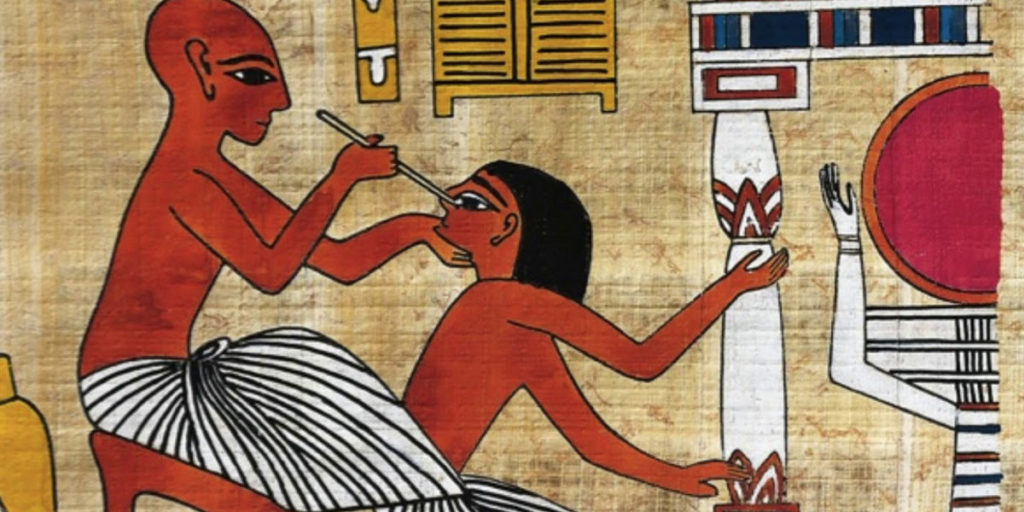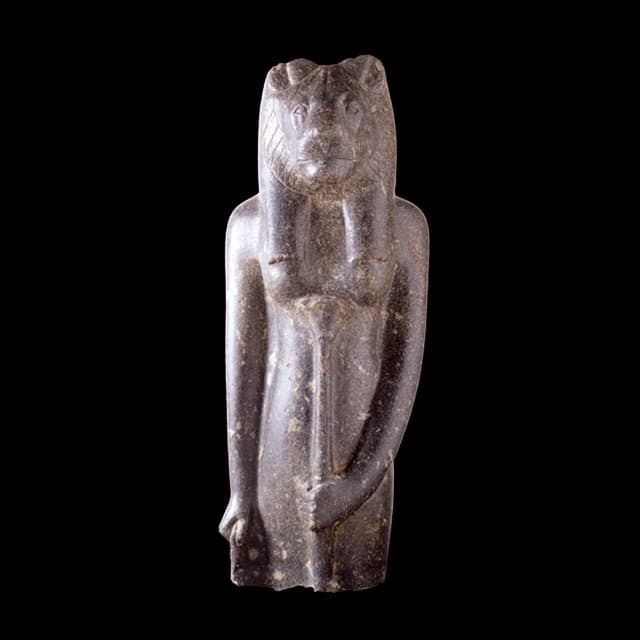Journey back in time to the enthralling land of ancient Egypt, and you’ll find a society divided through a complex and rigid social hierarchy, which governed every aspect of its people’s lives.
At the top of the social pyramid stood the Pharaoh, followed by the elite nobility, priests, and scribes who held the keys to the inner workings of the kingdom.
Further down the social ladder were regional governors, artisans, and merchants, each with their role to play in maintaining the balance of Egyptian society.
Finally, at the bottom of society, were the peasant farmers and slaves, who worked to provide the resources that the ancient kingdom needed to flourish.
From the powerful Pharaoh at the very top, to the peasant farmers and slaves at the bottom, each social class had its role to play in this intricate system – a system that enabled Egypt’s cultural and economic stability for millennia.
The Pharaoh, A God Amongst Men
At the top of the social ladder in ancient Egypt stood the ruling Pharaoh, who held an arguably god-like status. The Pharaoh held absolute power over society and received divine-like treatment throughout much of ancient Egyptian history.
His or her primary duty was to maintain “Ma’at,” the concept of universal harmony and balance between the people and their gods. Their success in this role was seen as essential for the prosperity and longevity of the entire kingdom.
Although the Pharaoh’s responsibilities mainly focused on ruling over the people, securing borders, and upholding the social hierarchy, it was also expressed through the construction of monuments, with the Pharaoh’s tomb being especially important.
The Pharaoh, of course, lived a daily life full of luxury and was by far the most powerful and wealthy of all Egyptians.
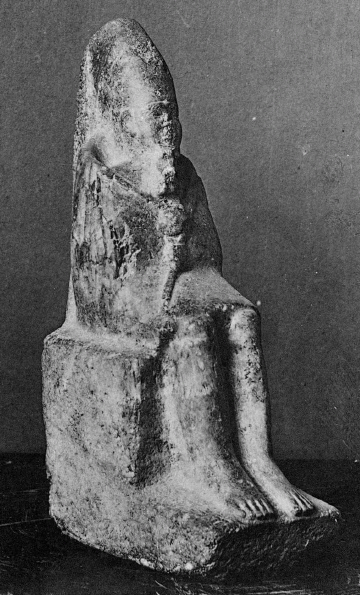
Priests, Officials, and Nobility
Below the Pharaoh stood the upper class of the nobility who were responsible for governing the country for the Pharaoh.
He or she ruled through their vizier – a high-ranking political advisor or minister – who delegated tasks to bureaucrats, architects, and engineers. Military leaders were primarily responsible for matters of defense, while the priests served the gods and cared for the temple and its statues.
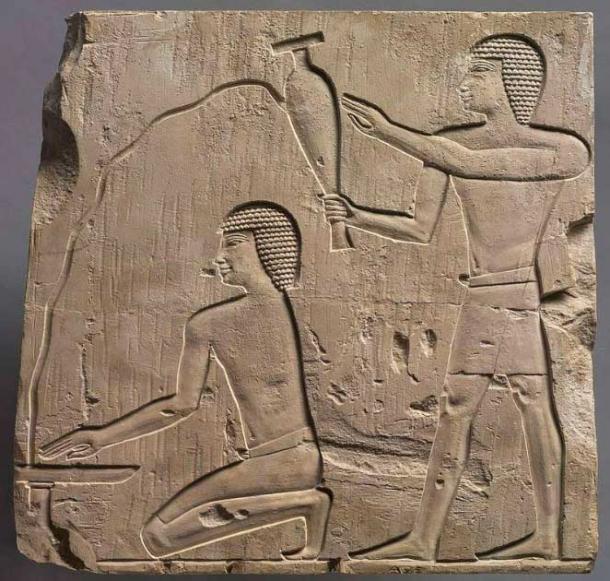
The highest levels of social status typically accompanied government or temple offices and it’s thought that the royal family and high court officials were connected by family ties.
In the Old Kingdom, for example, officials were frequently sons of the Pharaoh. In later periods the highest officials were often members of the same noble families.
The Pharaoh appointed many high-ranking officials, while nobility typically drew from ancient Egypt’s wealthy and powerful elite. The priesthood largely retained its own methods for education and inclusion.
Egypt’s Warrior Class
Another stratum of the Egyptian social pyramid was the soldiers. During the Old Kingdom, the government relied on regional governors – nomarchs – to provide men for the army. Nomarchs regularly conscripted soldiers from their region to employ in the military.
As Egypt’s ‘warrior’ class, they played an important role in defending the kingdom and expanding the Pharaoh’s empire. They were largely responsible for maintaining order and protecting the country from invaders.
While soldiers didn’t hold the same level of prestige as noblemen, they were still respected and held more status than the common people. Soldiers were even paid wages and given land as rewards for their service, which elevated their social and economic status.
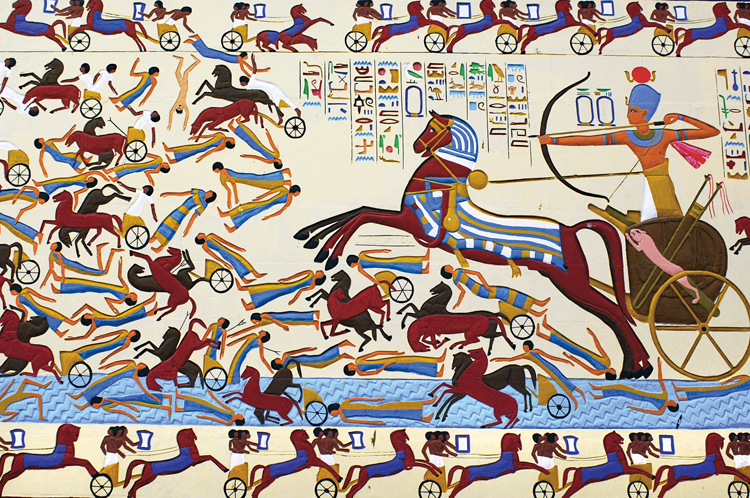
Ancient Egypt’s Vibrant Middle Class
The middle rungs of the ancient Egyptian social ladder were the educated professional classes, like scribes, merchants, and artisans.
Scribes were highly valued because they could professionally read and write. They were often associated with the government and the priesthood, and their work involved recording everything, from legal contracts to genealogies.
Merchants in Egypt were more like traders, who carried products such as gold, linen cloth, and jewelry to other countries and brought back exotic goods like cedar and ebony wood.
Meanwhile, artisans, artists, and other specialized workers had more access to wealth due to their skills.
The best-documented group of Egyptian craftsmen was the people living at Deir el-Medina, who enjoyed a special status by working on decorating the tomb of the reigning Pharaoh. In contrast, the somewhat miserable lives of other craftsmen are described in the ‘Satire of Trades,’ evidence that the material lives of these individuals could vary widely.
Overall, the social class of merchants, artisans, and other craftsmen in ancient Egypt were lower than the educated professional classes. The professional class included accountants, doctors, and scribes, and these people constituted a diverse working middle class.
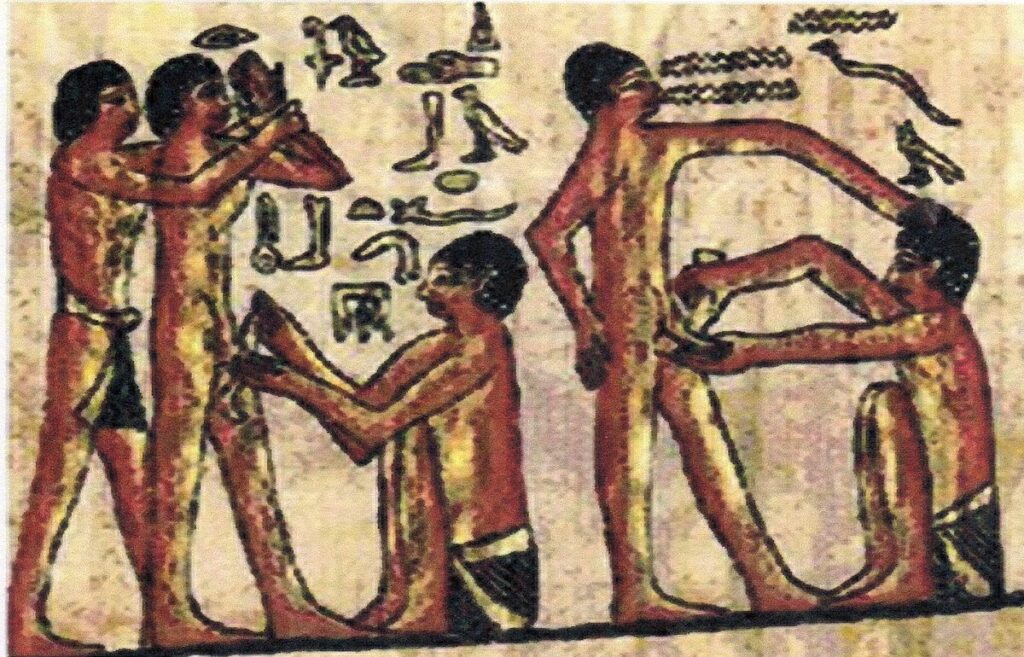
The Bottom of the Social Pyramid
Finally, the lower class of ancient Egypt were slaves, servants, and peasant farmers.
The majority of Egyptians were peasants, accounting for around 80% of the population. These people worked mainly in agriculture, producing crops and farming the land. Some were also employed as servants in the homes of wealthy nobles. Additionally, during the flooding season, many peasants would shift to working on large government building projects, like monuments or tombs.
Household servants were common, and in some cases, were even recognized as important members of the family. In a cashless society, their labor, like that of farmers, was typically paid with goods such as beer, bread, and clothing.
There is plenty of debate about whether slavery existed in ancient Egypt – the term ‘hem’ was often used to describe someone with fewer rights in society, often tasked with serving a god or working in royal administration, but scholars argue whether this represented a kind of slavery or not.
All labor was considered noble and respectable in ancient Egypt. Regardless, peasant farmers and servants had little social status, despite their importance to society, and often relied on wealthier landowners or the government.
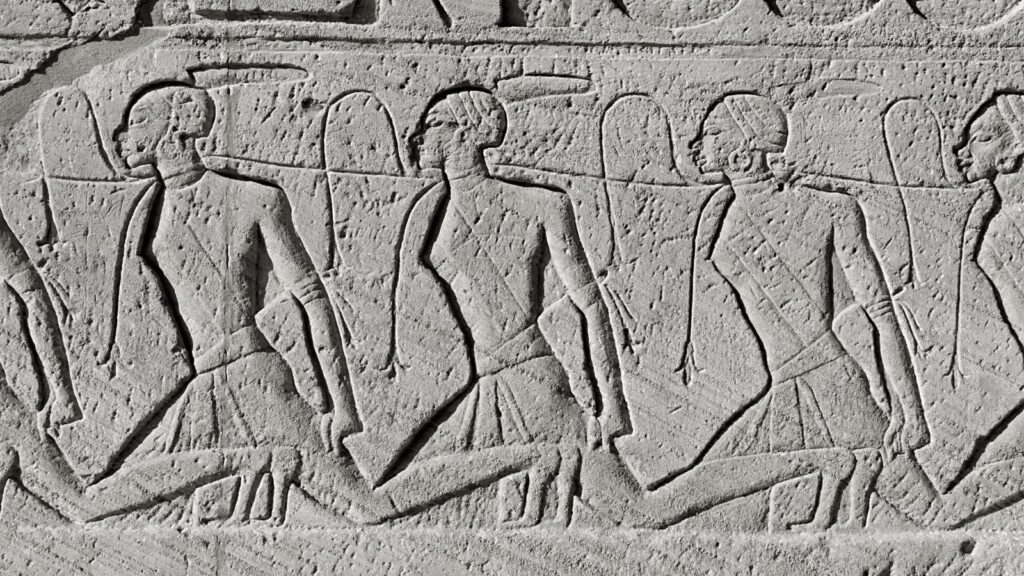
Social Class Throughout Ancient Egypt
Social class played a crucial role in ancient Egyptian society. The rigid hierarchy, with pharaohs and the elite at the top, followed by warriors, scribes, and merchants, and ending with the vast numbers of servants and farmers, created a sense of order and stability.
Class was largely determined by birth, but hard work and talent could lead to some upward mobility. However, those at the bottom of the social ladder, especially peasants, had limited opportunities to advance and enjoyed little social status.
The social structure of ancient Egypt had a profound impact on all aspects of life, from economic opportunities to religious beliefs. It shaped the way people lived, worked, and interacted with each other, ultimately leaving a lasting legacy on its impactful history.
References
“Ancient Egypt: Social Structure.” LibGuides, St Albans Secondary College, 24 Mar. 2022, https://libguides.stalbanssc.vic.edu.au/ancient-egypt/social-structure.
“Daily Life in Ancient Egypt.” Digital Giza, Harvard University, http://giza.fas.harvard.edu/lessons/social-status-in-ancient-egypt.
“Egyptian Society.” Egypt’s Golden Empire, PBS, 15 Mar. 2006, https://www.pbs.org/empires/egypt/newkingdom/society.html.
Mark, Joshua J. “Social Structure in Ancient Egypt.” World History Encyclopedia, 21 Sept. 2017, https://www.worldhistory.org/article/1123/social-structure-in-ancient-egypt/.
“Social Classes in Ancient Egypt.” Digital Egypt for Universities, University College London, 2003, https://www.ucl.ac.uk/museums-static/digitalegypt/social/index.html.
